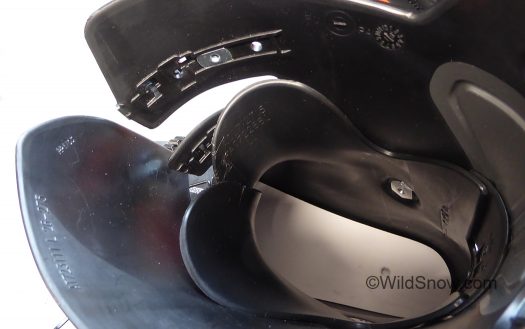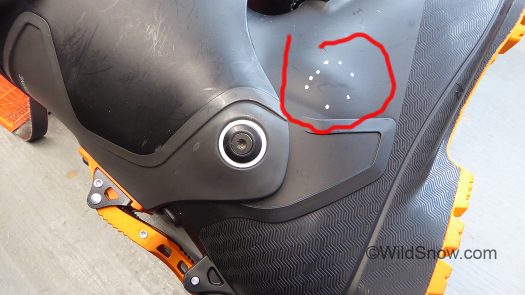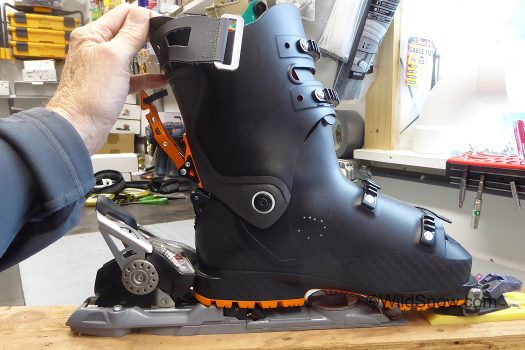
Might as well show that cuff articulation first. After all, we are about skiing uphill. The cuff moves so far back it’ll actually pop up above the scaffo overlap at the front (you won’t do this in real life, but shows these things do indeed flex.) Catalog claims “54 degrees” of movement. In real life, Hawx Ultra 130 cuff articulation is limited by the liner and how you set the buckles. If you wanted to free things up a bit you could probably do a bit of judicious carving and cutting, but most skiers will not feel the need for that. (To answer inevitable questions about that thing holding the boot, it’s a fixture I use to hold boots for while doing fit modifications, and photos. It’s not an experimental binding.
Ok kids, this boot is an overlap that’s indeed svelte — but no 1-kilo wonder. It’s not a ski touring boot. It’s freeride ski touring boot. But at 1434 grams (size 27.5), with excellent cuff mobility, he does tour. Indeed, I’d call the Hawx Ultra XTD 130 a sort of “crossover.”
Enough wordplay. Firstly, I skied the Hawx Ultra XTD 130 via a couple of tours as well as cable laps. As you’ll see in the photos below, cuff articulation is excellent (though as with most overlap beef boots you’ll feel resistance from the liner as well as various parts of the shell.) In terms of downhill skiing flex, it’s as progressive as anything I’ve tried in an overlap, while quite stiff. Is it the legendary 130? Probably, but it’s not a 170 so those of you looking for plug boots perhaps need to visit the Atomic FIS shop and bribe one of the boot builders. More details in photo captions below.
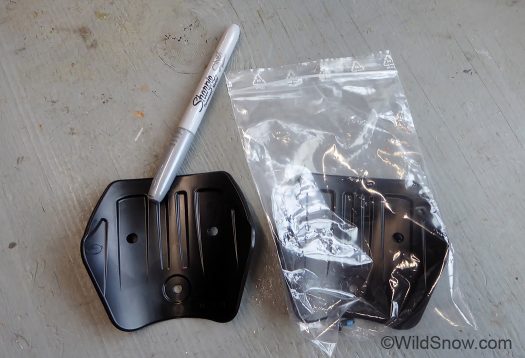
Optional cuff spoiler comes in the box. You can increase forward lean with this, or add rearward support.
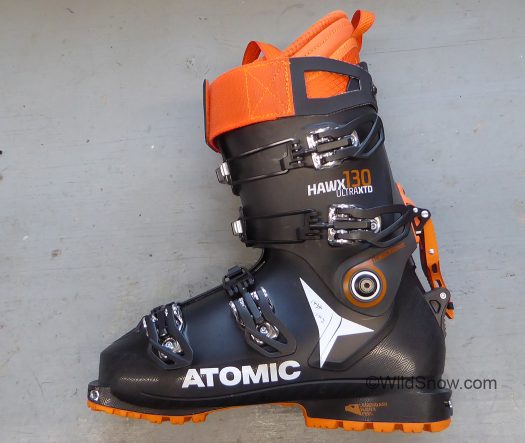
Another view, note the external lean lock. It’s a personal thing, but don’t like boots that appear to be molded out of something used on the Ghost Busters movie set. Nice, dark and neutral, that’s the visible part of the Hawx 130.

Liner is well made and gives you a hit of Ghost Busters vibe. Neoprene flex zone at the rear helps stiffer boots still feel nimble. Good to see that. The liner is said to be “light” and does weigh only 292 grams with OEM footbed. Overall, it appears to be a good compromise between providing a few stiffer regions but not loading up with a lot of mass to try and make the boot feel stiffer when tried in a ski shop.
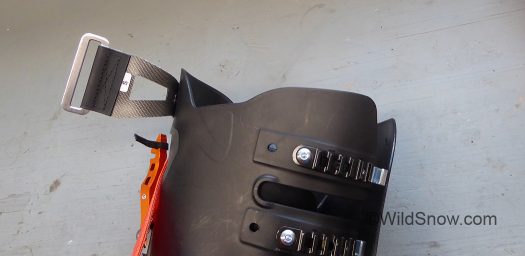
Cuff is as high as any beef boot we’ve seen. The few extra grams this requires results in the boot feeling significantly more powerful, in my opinion. Leverage and all that.
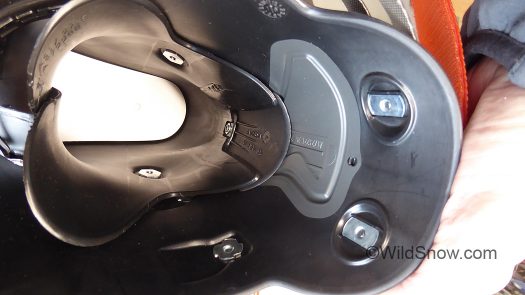
Inside at rear, the cuff pushes against V shaped notch in scaffo. The V notch closes as you leverage the cuff forward, thus responding to your input. This sort of active plastic is a common feature in beef boots that work well. Good to see here.
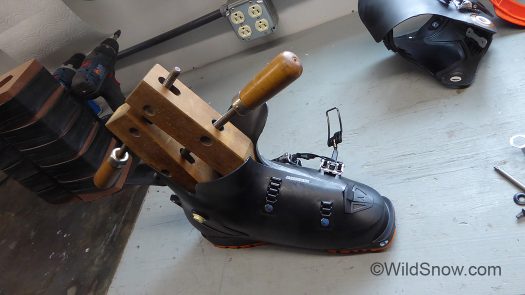
I found entry too difficult for my bad ankle, and somewhat challenging on my good side as well. So I opened up the shell instep overlap just a bit, as well as cutting the elastic band that holds the liner closed over the instep. I still prefer a tongue type shell for ease of on-off, but I got these working. Ease of entry and exit is something I’d recommend should always be tested while a boot is still returnable, or on the carpet before purchase. You don’t want to be struggling in the trailhead parking lot, or worse, while crouched in a tent.
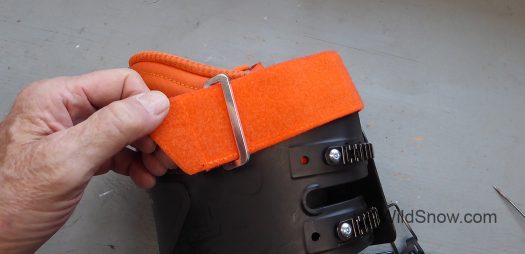
I couldn’t figure out if this was a power strap or something used to lash pallets of rebar for crane hosting on a building project. The first OSHA certified power strap, kudos Atomic!
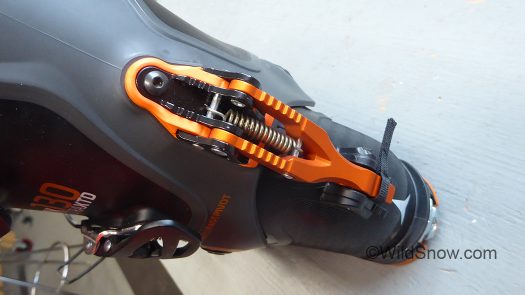
I’m told the external lean lock took a lot of work to get right. Respect. I’m so over internal lean locks that fail at the worst possible times. Cuff lean angle is user configurable by inverting the lean lock backer plate, which sets you at 15 or 17 degrees. A couple more degrees can be added by installing the supplied rear spoiler-shim (26 grams) behind your calf.
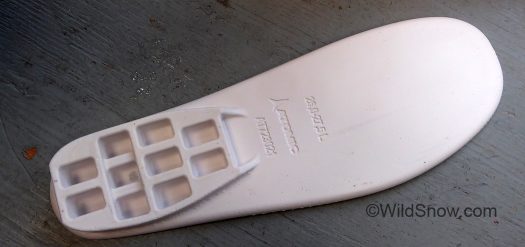
By the way, you get a nice lightweight footboard in the bargain. Boot fitters like hacking on these to solve various problems.
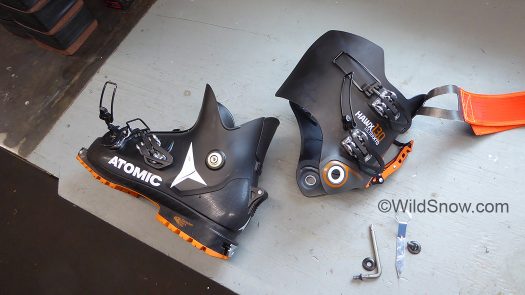
I like the ability to remove cuff. Helps with fitting mods and gives peace of mind as you know if the pivots break or wear they can be easily replaced.
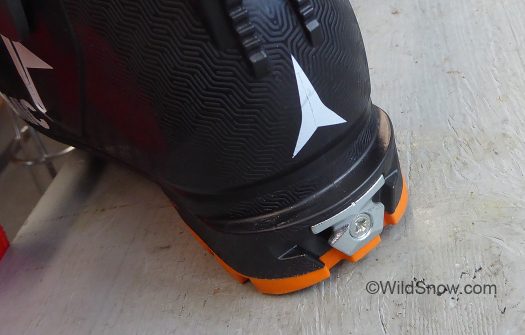
Dynafit certified gen-1 tech fittings. We like the generation-1 toe fittings (they allow more room for sole thickness), but we’d prefer a rear fitting that was through bolted into the shell rather than using a screw. But if you keep your eye on this type of heel fitting (watch for it coming loose) it’s been shown to work ok. It’s actually held in by more than the screw, as it has two hidden prongs that also make a physical connection to the boot.
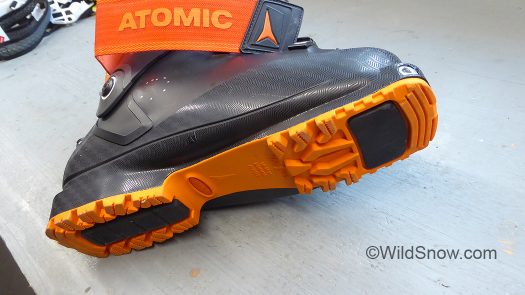
Last thing, WTR type sole should always be on this type of boot, in my opinion. In case you want to use it in a compatible alpine binding , a frame touring binding, or hybrid binding such as Kingpin or Tecton. This is not a removable “swap” sole system. We prefer that for most boots as it reduces cost, weight and complexity. That said, some of the newer swap sole configurations are quite clever so we’ll see how that all evolves.
Conclusion: Thumbs up for a good effort at making an overlap “beef” boot with reasonable mass and good cuff articulation. You can’t beat the Atomic Memory Fit system, and the serviceable cuff pivots are somewhat unique to the industry. A lot of boot.
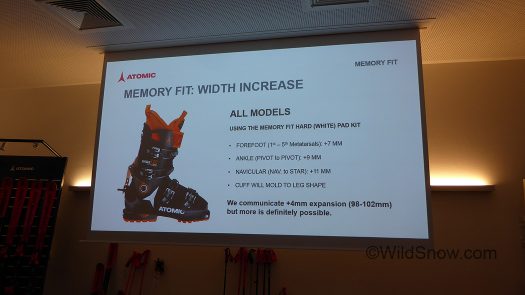
Memory Fit details, impressive.
Specs:
Weight size 27.5 is 1434 grams (shell 1142 grams)
No cuff cant angle adjustment, instead adjust with padding or while fit molding.
Construction: Overlap shell with external lean lock.
Tech fittings: Dynafit certified, 1st generation type.
BSL 27.5, 312 mm (on the long side, fit my feet without a length punch).
Last width: Something like 100 mm, though remember that the Memory Fit system can make the boot significantly wider if needed. Atomic calls the fit “narrow,” I’d call it somewhere between narrow and medium.
Availability: Fall 2017.
Related Links:
Atomic Austria visit.
How Atomic flex tests their ski boots.
WildSnow.com publisher emeritus and founder Lou (Louis Dawson) has a 50+ years career in climbing, backcountry skiing and ski mountaineering. He was the first person in history to ski down all 54 Colorado 14,000-foot peaks, has authored numerous books about about backcountry skiing, and has skied from the summit of Denali in Alaska, North America’s highest mountain.

